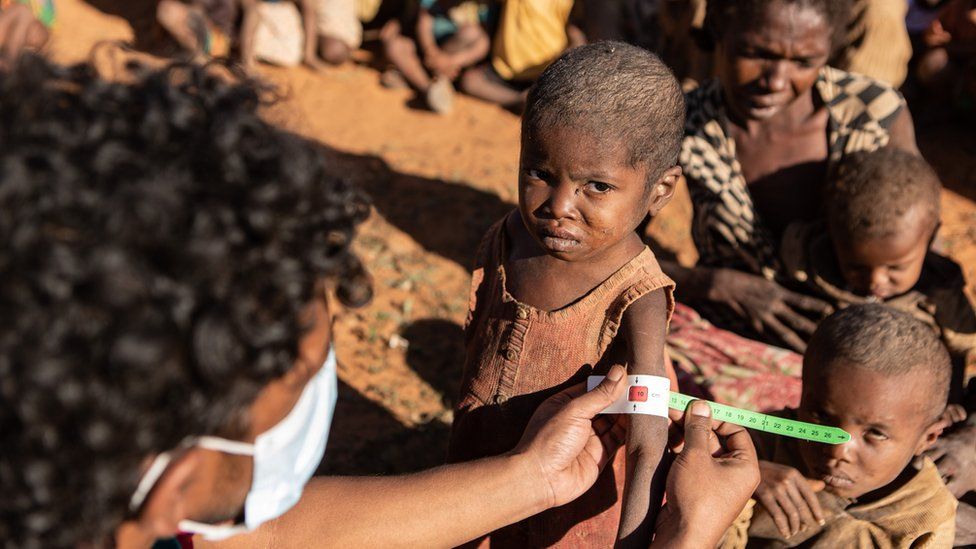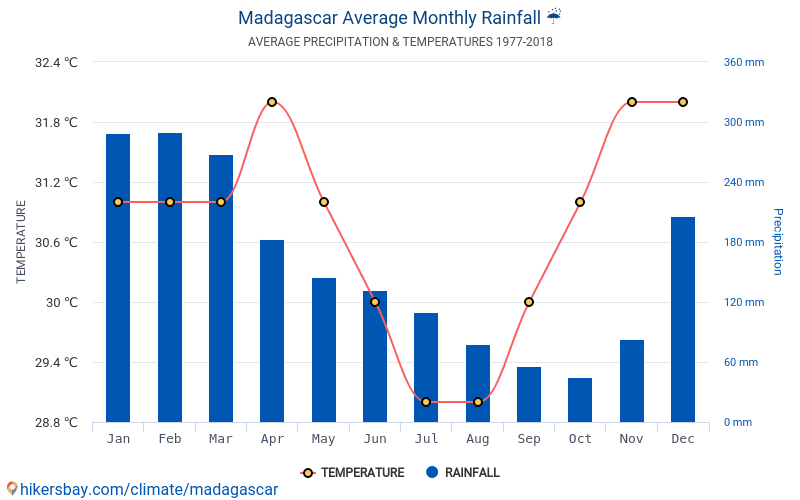
An abode of endemic species, a haven for (to name a few of the many diverse animals such as) lemurs, vibrant colored lizards, and the fossa, with the water from the Indian ocean sweeping the coastline of Madagascar, the biodiversity of this country has left scientists dumbfounded. The baobab tree whose six out of eight species is exclusive to this region has been found to endure extreme climatic conditions but these 2000-year-old trees are now endangered and may be completely wiped out from the face of the earth in the coming years, majorly due to the ongoing climate change, that has been a prominent global phenomenon for nearly 200 years. In the Malagasy culture, it is believed that the elders would often conduct meetings under these trees as the spirits of the baobab would steer them for effective decision-making. Rather this belief now points to the constant depletion of the environment and thus appropriate measures to safeguard the living are more than necessary in today’s time.
Apart from the flora and fauna being in peril, the locals too have a first-hand experience of the direct consequences of climate change that has deeply affected their survival. They are forced to undertake some desperate measures. The starving stomachs of the people have pushed further the levels of malnourishment among children at a distressing number of 16.5 percent which is the result of a twofold increase in these values in just four months. To say the least, about 1.1 million Malagasy population is facing acute starvation leaving them to face the worst case of droughts in the last 40 years. And the climate is one of the main contributors to this issue as it has impacted the rainfall, sea levels, and temperatures in various regions of this biodiversity hotspot, which directly impacts the subsistence farming that more than 60 percent of the Southern Malagasy population do to afford bread and butter.

Climate change alone (with no deforestation) under RCP 8.5 is accounted to have almost the same effect in magnitude as a relaxed deforestation scenario (without climate change). And indeed changes in the climate and other factors such as deforestation and overexploitation have only worsened the situation. A change in carbon emissions as low as RCP 2.6 in comparison to the actual value of RCP 8.5 can affect the habitat of the region and therefore it is now a proven fact that the agriculture and availability of wild foods have decreased tremendously because of a rise in temperature affects the rainfall, which has reduced water levels as the dry air sucks out the moisture from the vegetation. In addition to this, The sea level has increased, which adversely affected the groundwater levels and its salinity. Therefore the former and escalating evapotranspiration has caused droughts, hence exposing 7,50,000 people without any access to safe and clean water. In consequence, 80 percent of the population whose main source of livelihood is linked with agricultural activity, are now facing the risk because they do not have adequate resources to continue this activity which earlier sustained them. That being the case, the people are deeply entrenched in despair and have compelled them to satisfy their hunger by resorting to eating dried cactus, clay, etc. The probability of locusts infestation on crops has become a reality due to changeability in the climate. This is why the people are also feeding on locusts to fill their aching bellies. Furthermore, they do not have appropriate utensils to cook food as they have to sell most of their possessions and livestock to afford to eat a handful of food just enough to survive. And now it is not only people from rural areas but from urban towns too that are hit with the same hardships. All of the previously mentioned states of complications make Madagascar the first country to face the ordeal of famine catalyzed by climate change. Adaptation strategies for extreme weather events and climate change.
In the past, farmers with small landholdings have tried to curb these losses to their livelihood by altering the strategies by implementing soil and water conservation practices and planting new varieties of crops, only to see most of these strategies to drought or flooding.

Even though organizations such as World Food Programme have been working closely with the Malagasy government to curtail the growing crisis, the larger issue needs to be attended to immediately as this news comes as a warning sign of what may be destined for other countries (especially the developing nations whose poor population suffers the most) if a collective decision is not enforced at the right time. The onus lies on the developed nations to decrease their emissions whereas developing nations should try to mitigate the strategies in their developmental projects.
Currently a student teacher who is always looking out for opportunities that challenges her ideals and makes her question her stance on variety of issues.


I аlways spent my half an hour to read this webpage’s posts
every day along with a cᥙp of coffee.